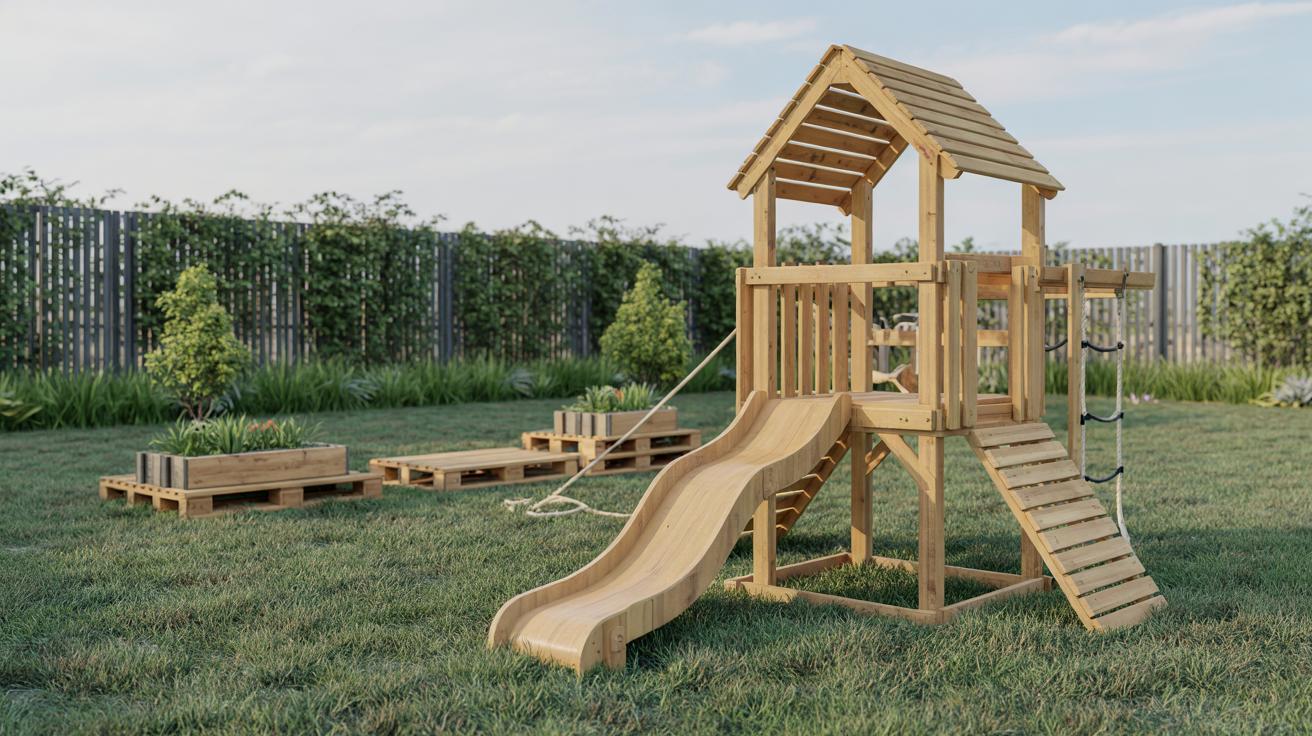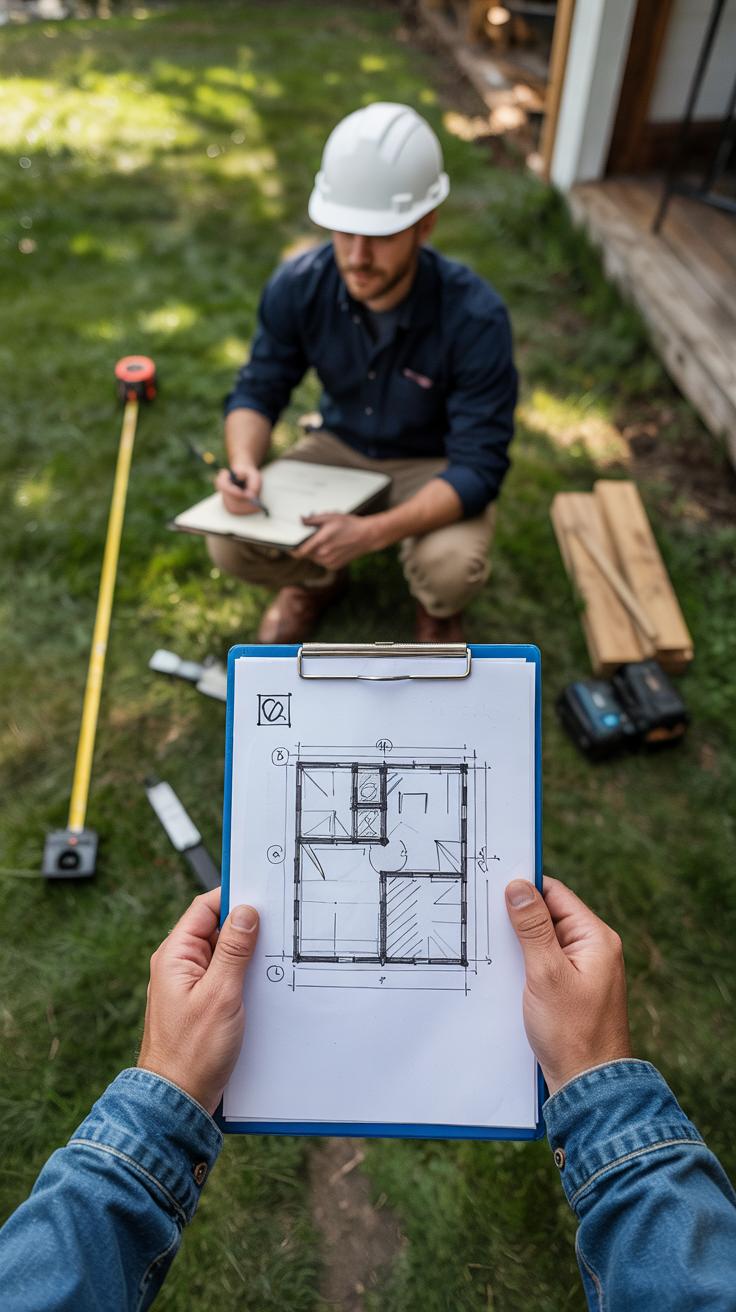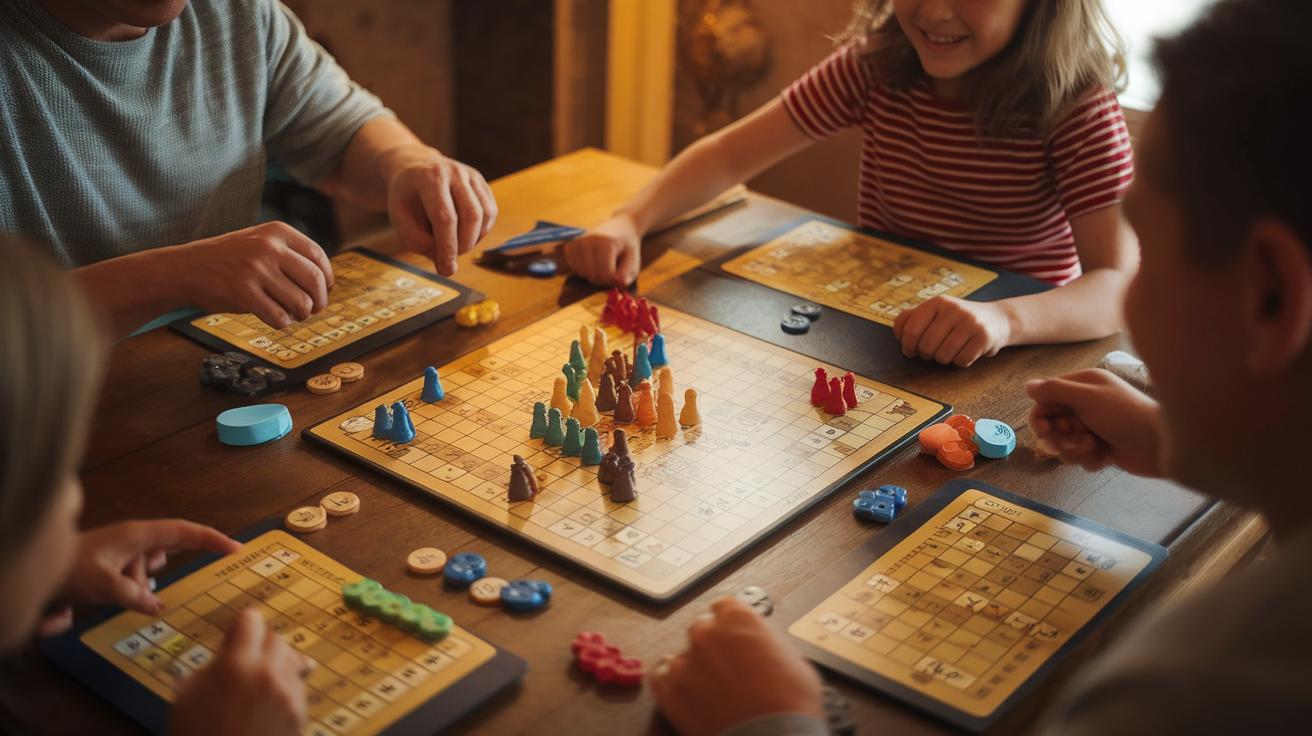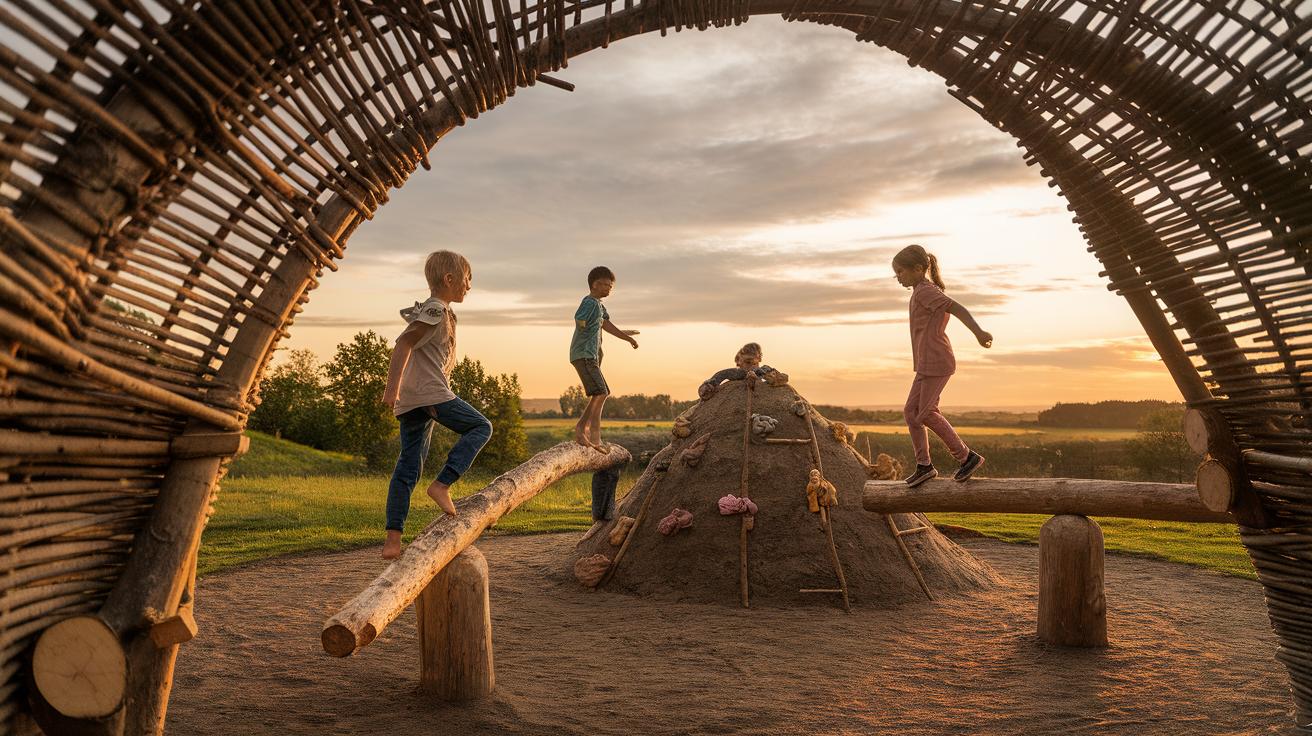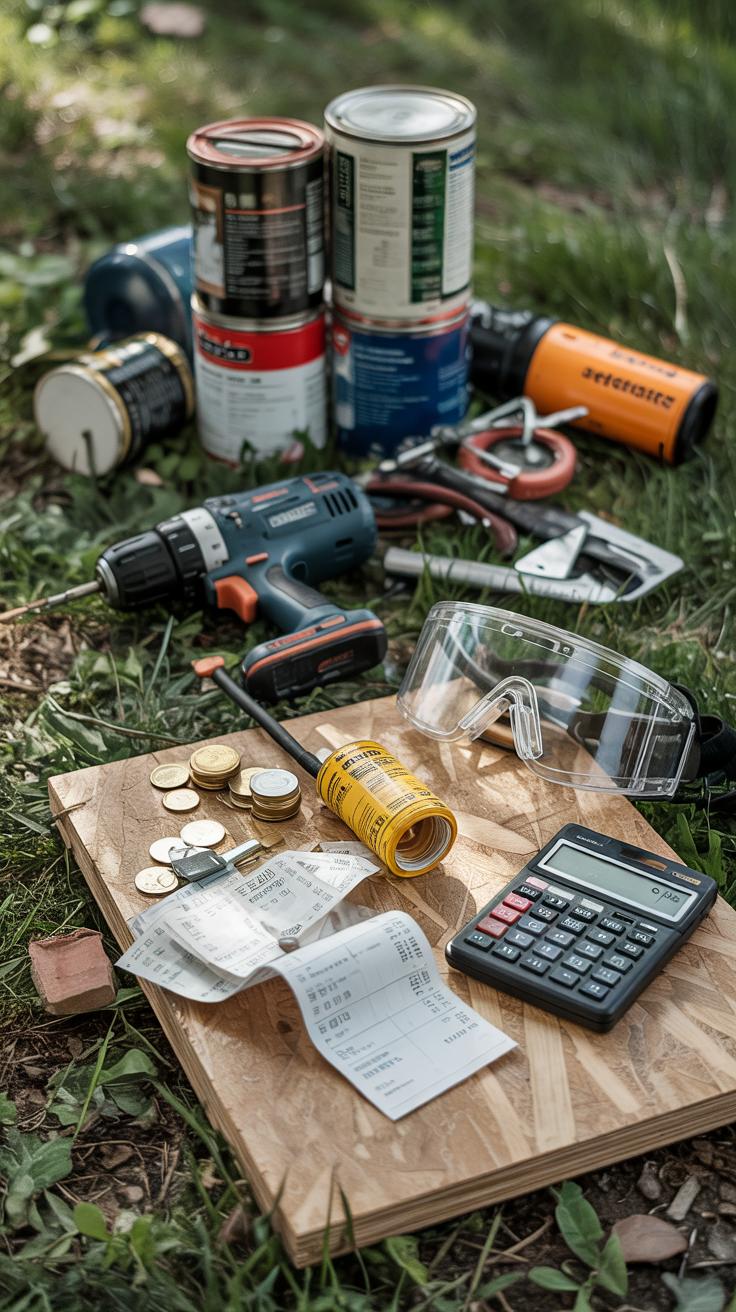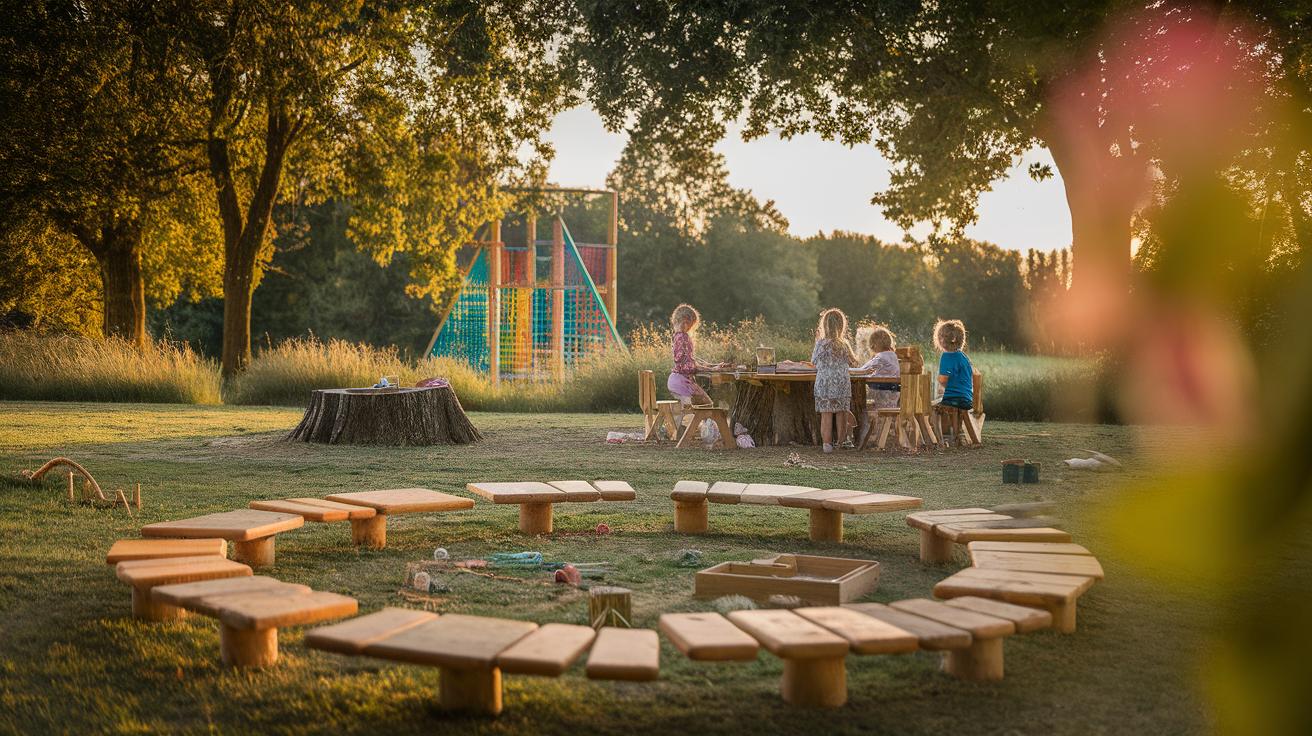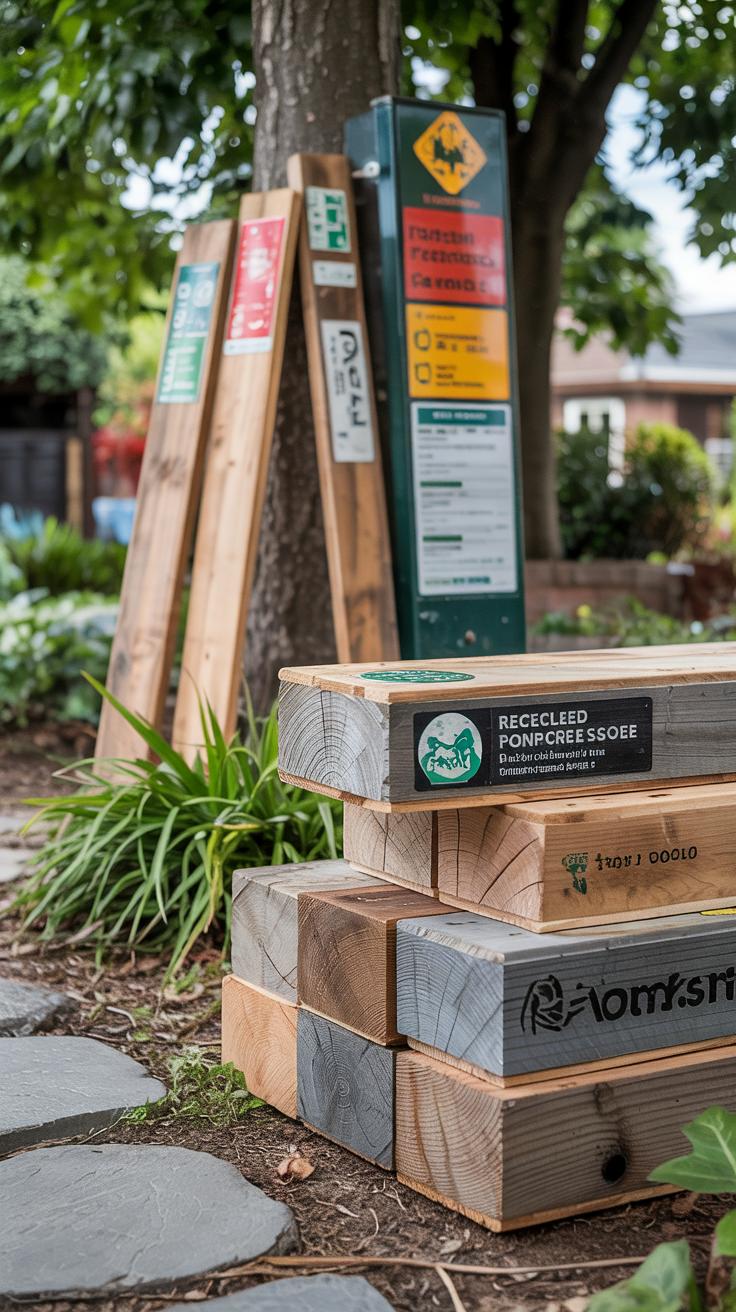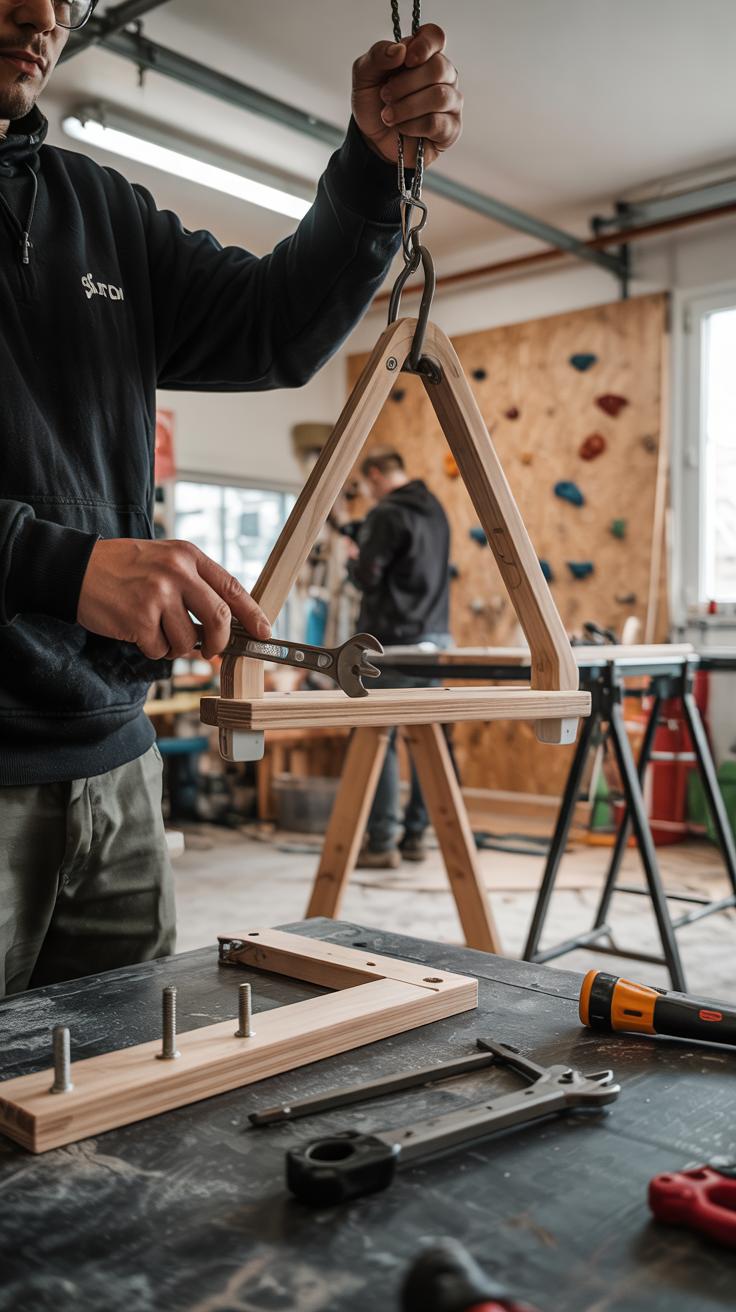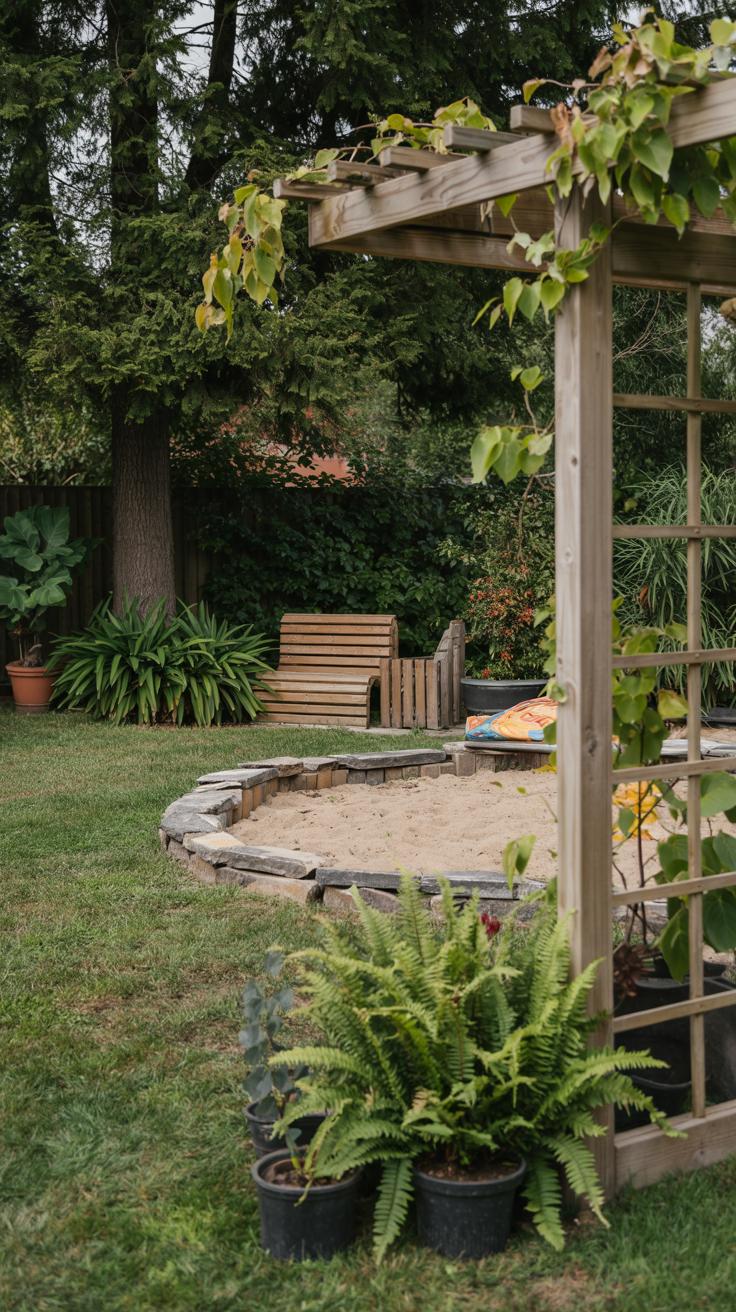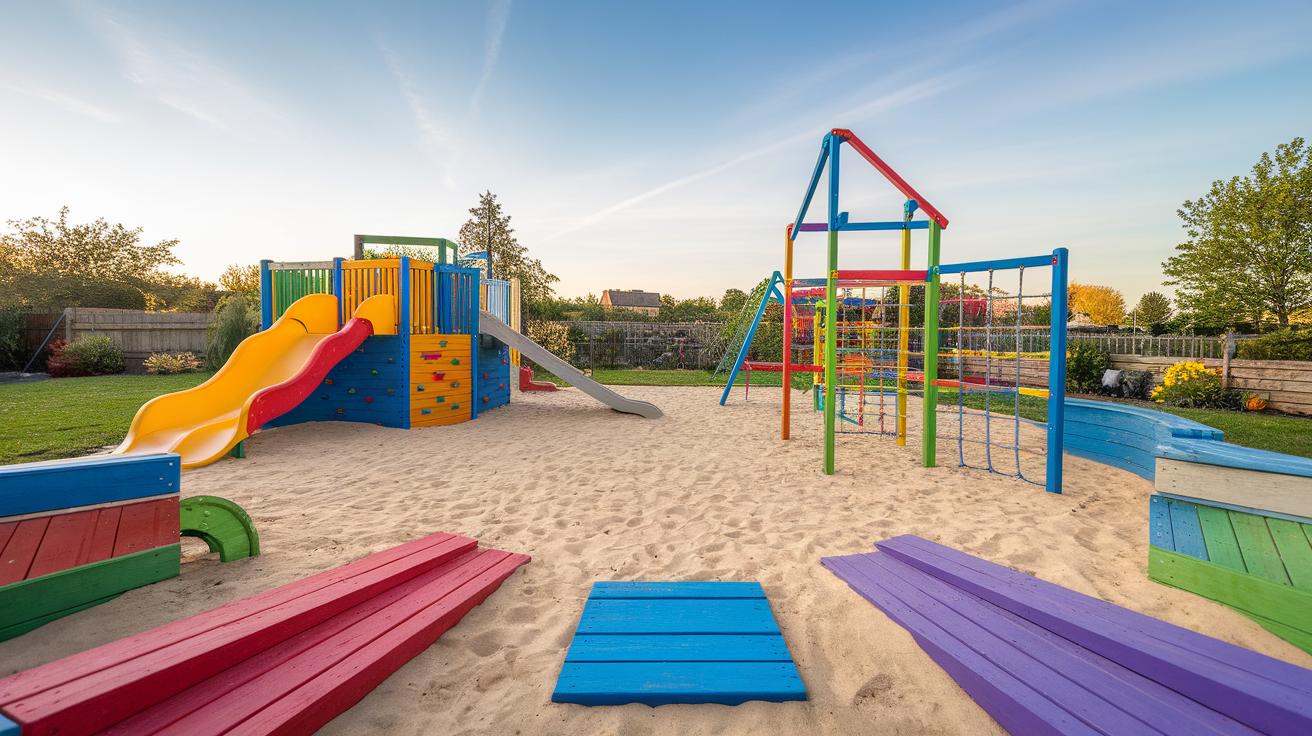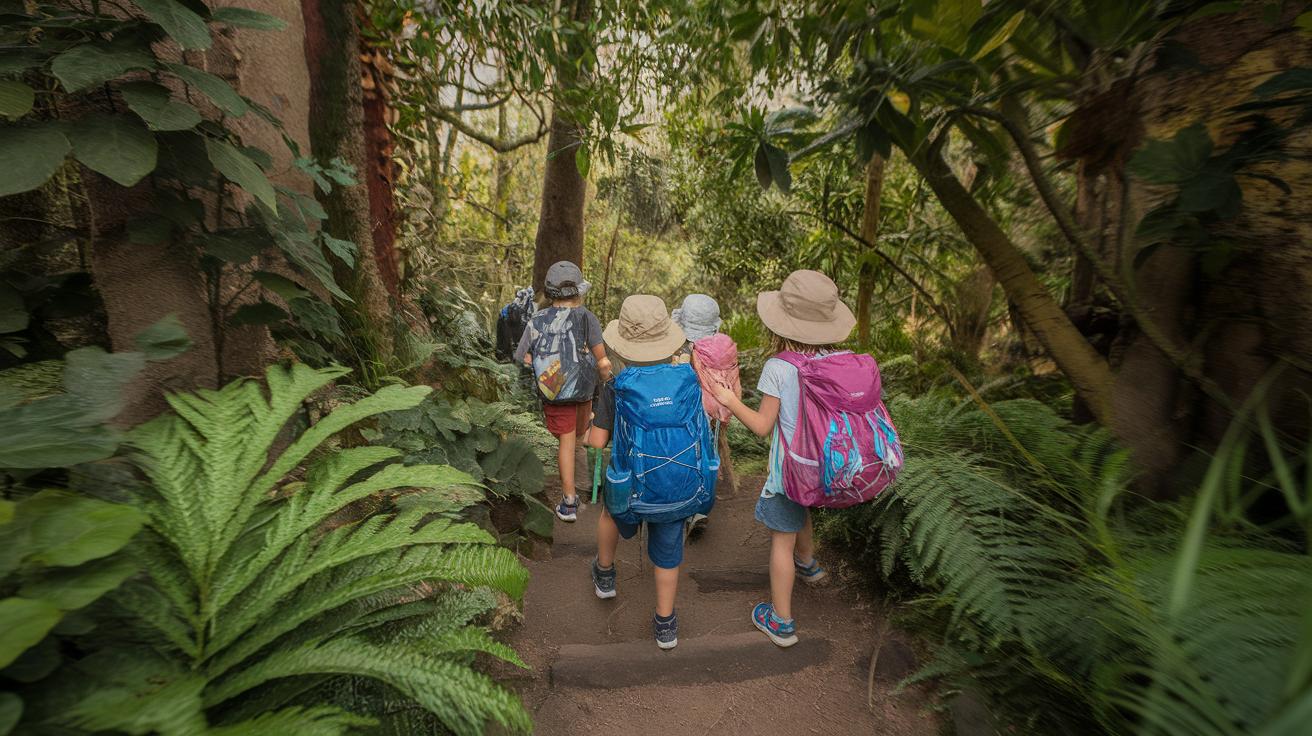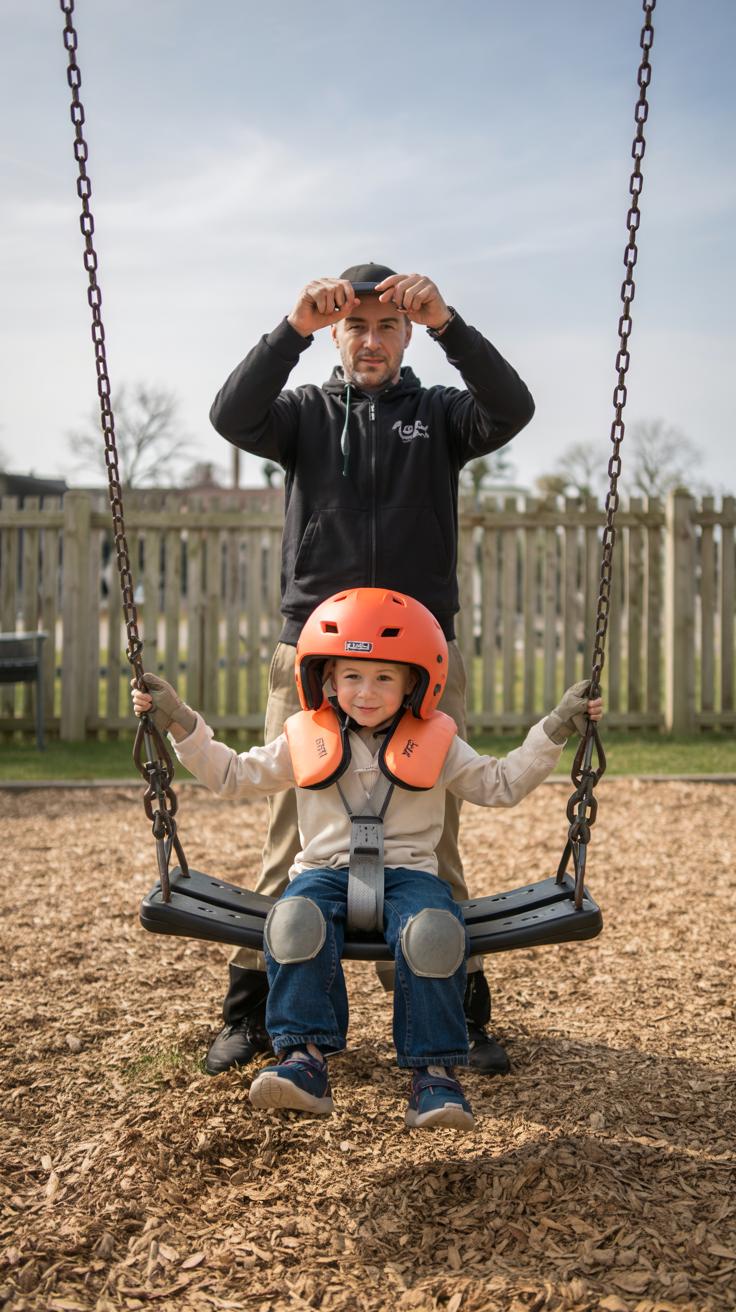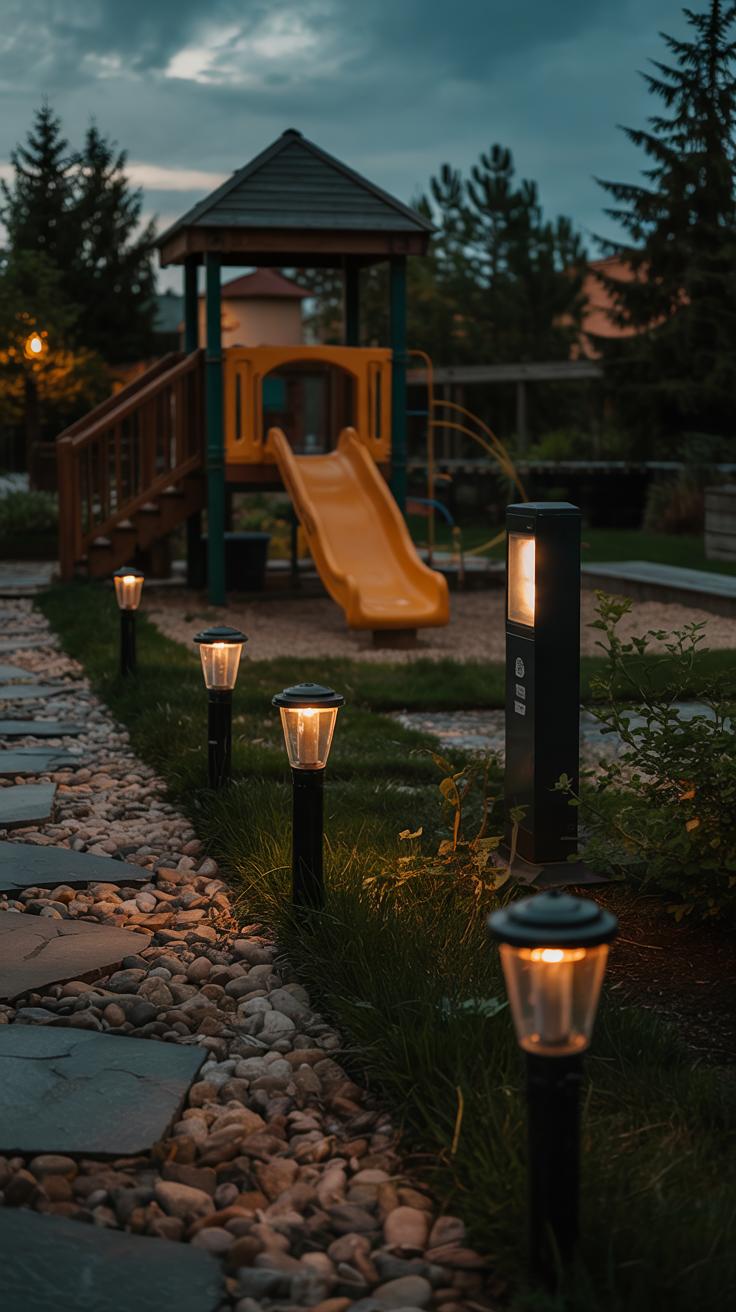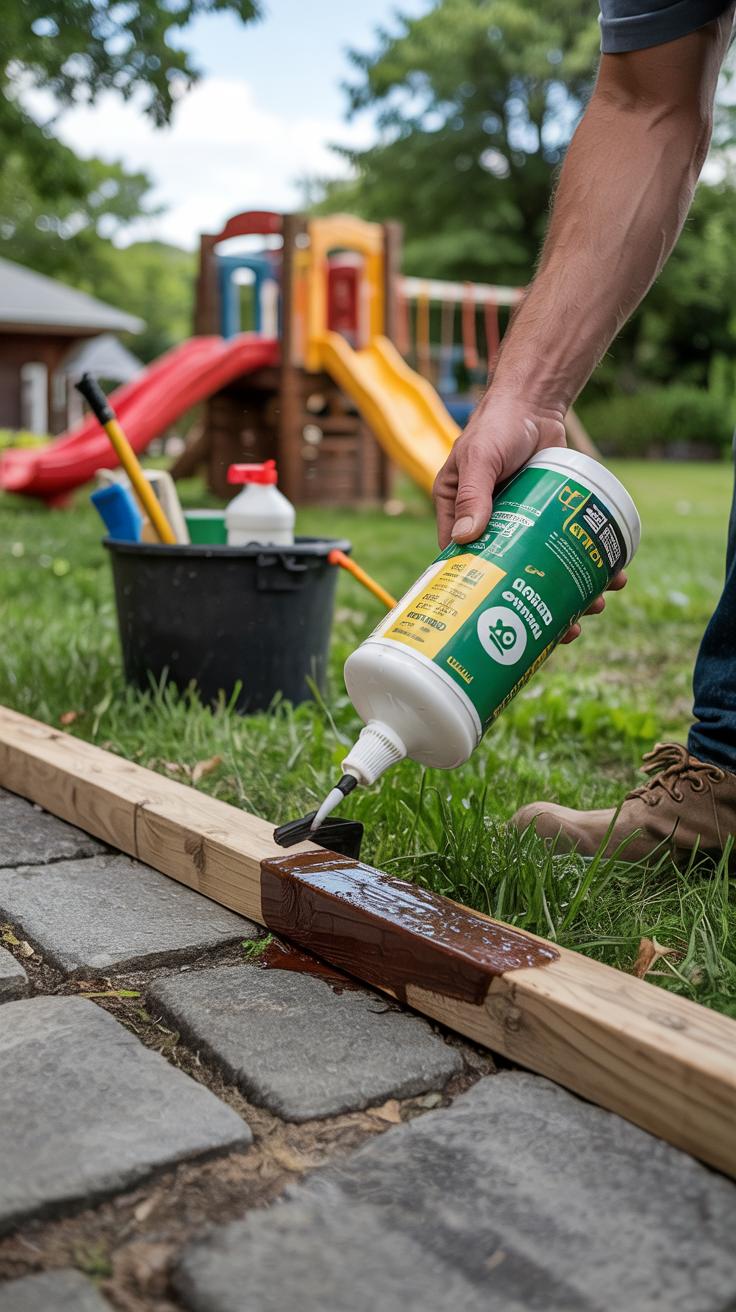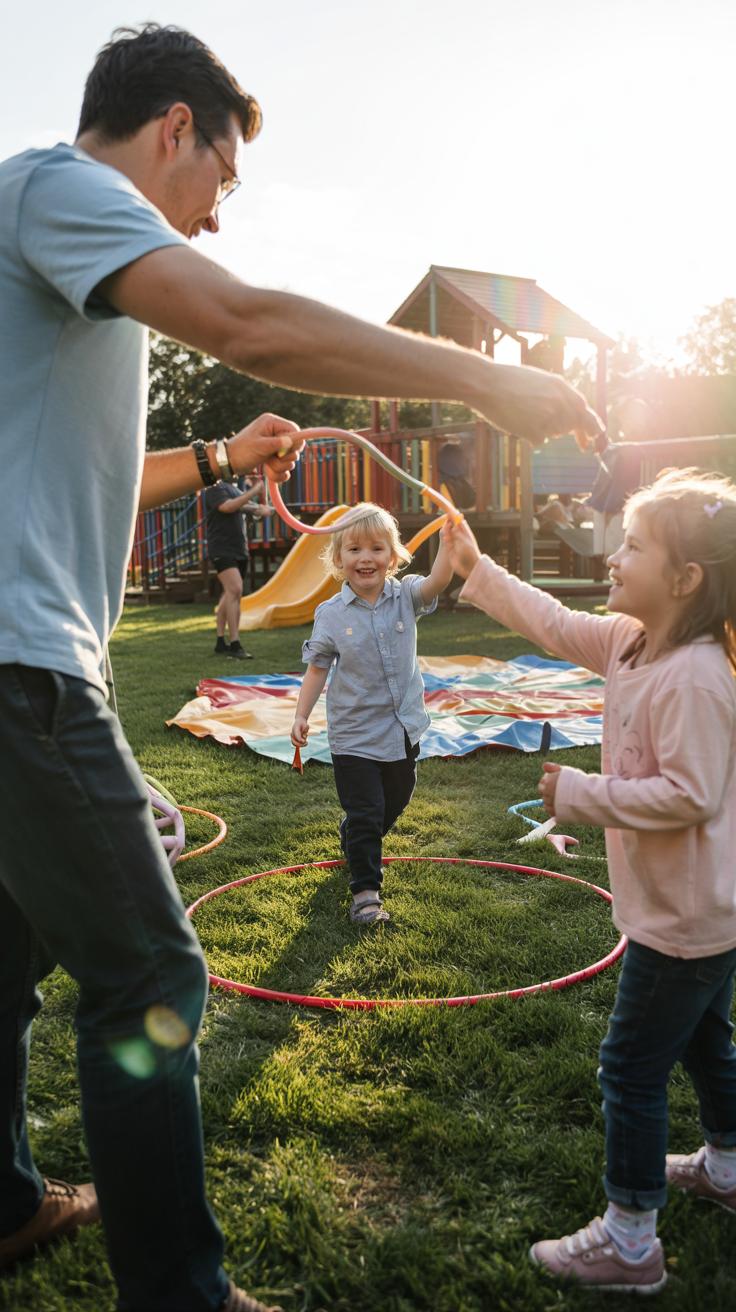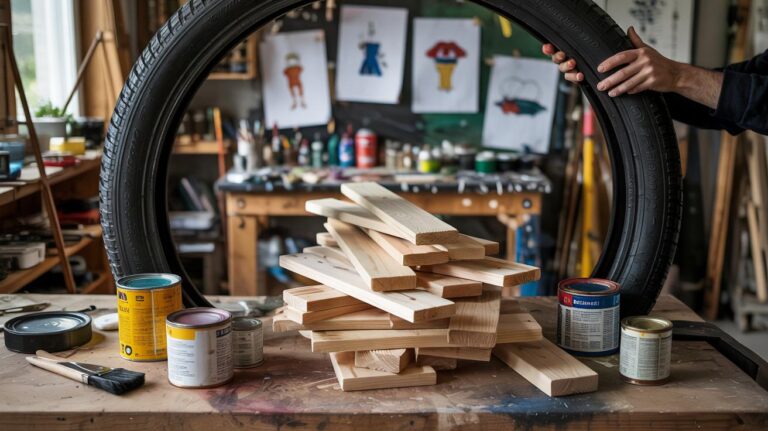Introduction
Creating a backyard play area can bring hours of joy and activity to your family. You may wonder how to transform your outdoor space without spending too much. This guide breaks down affordable ideas to make your backyard a fun and inviting place for children and adults. You don’t need to hire expensive professionals or buy costly equipment. With a little creativity and effort, you can craft a backyard that suits your family’s needs and budget.
When putting together a play area, the focus should be on safety, fun, and versatility. What kind of activities do you want to include? How much space do you have? Planning helps ensure the best use of your backyard. This article explores practical steps and tips. It helps you decide what features to add, choose materials, and keep the costs low. Ready to make your backyard a favorite spot to play and relax? Let’s explore how to make it happen.
Planning Your Backyard Play Area
Begin by looking closely at your backyard space. Measure the area you want to use for play to understand its size and shape. Notice where the sunlight hits most and where shade naturally occurs during the day. Children often need shaded areas to play safely without too much sun exposure.
Safety should be a top priority. Check the ground for hard surfaces, uneven terrain, or obstacles that could cause falls or injuries. Think about how close the play area is to doors or windows so you can keep an eye on your kids easily. Consider your family’s needs—how many children will use it and what they enjoy doing outside.
Ask yourself what kind of play suits your family best. Would a sporty area for ball games work, or is a quiet spot for reading and imaginative play better? Planning first helps you create a backyard that matches your space and your children’s interests.
Assessing Your Space
Start by measuring the length and width of your backyard with a tape measure or a measuring wheel. Sketch a simple map on paper, marking fences, trees, and existing features like flower beds or patios. Evaluate the ground condition—are there soft grassy patches, hard dirt, or rocky spots? This affects what kind of play equipment you can install.
Check the terrain for slopes or uneven areas. Flat surfaces are safer for running but slight slopes can be useful for slide setups. Think about how easy it is to reach this space from your house and where you might add gates or paths for quick access. Using string or stakes can help mark boundaries and visualize how much usable space you have.
Setting Goals for Your Play Area
Think about the children’s ages and interests to decide what features to include. Younger kids often enjoy swings and sandboxes, while older kids may want basketball hoops or climbing walls. Count how many children will use the area at once to avoid overcrowding.
List the play activities your children like most. Prioritize features that make daily use easier and safer. For example, if your kids love water play, consider a small splash pad over a large pool to reduce cost and maintenance. You can choose multi-purpose equipment to maximize fun in less space.
Ask yourself which features will grow with your children or offer space to add new play elements over time. Clear goals help you focus on what really matters and stay within budget while creating a backyard everyone will enjoy.
Budgeting Tips for Your Backyard Project
Creating a Realistic Budget
Start by listing all the elements your backyard play area will need. Include materials, equipment, and any hired help. Research prices online and at local stores to get a clear idea of costs.
Set a maximum amount you are willing to spend and break it down into categories, such as ground covering, play structures, and safety features. Use a spreadsheet or a simple notebook to track every expense as you shop or make purchases.
Check your progress often. If a particular item costs more than expected, consider scaling back in another area or finding a cheaper option. Flexibility in your plan helps avoid overspending while keeping the core features of your play space intact.
What is the most important item for your family’s play needs? Focus your budget around that while trimming less critical costs first.
Smart Spending Choices
Look for used play equipment on online marketplaces or local community groups. Many families sell almost-new items at a fraction of the price. This approach can save hundreds of dollars.
Recycled materials often work well for DIY projects. Old pallets can become a sandbox frame or seating area. Tires can turn into climbing obstacles. Explore ways to reuse what you already have or find cheap supplies from local businesses.
Some parts of the play area need quality investments. Spend more on safety surfaces like rubber mats or proper anchoring for climbing gear. Poor-quality or unsafe equipment may cost more in the long run through repairs or accidents.
How can you balance spending less with keeping your children safe? Decide where to cut costs and where to invest carefully to create a fun and secure outdoor space.
Choosing Affordable and Safe Materials
Choosing the right materials for your backyard play area affects safety, durability, and cost. You want materials that protect kids from injuries while standing up to weather and wear. Both natural and synthetic options have benefits and drawbacks. Think about how much time you want to spend on maintenance and what fits your budget.
Natural materials often blend nicely with your yard and feel comfortable to play on. Synthetic options may last longer and need less upkeep. Consider what matters most for your family’s needs. How much wear and tear will your play area face? What local resources can you use to save money without sacrificing quality?
Natural materials for play areas
Wood, mulch, sand, and natural stones create a soft, inviting play surface. Wood chips or mulch cushion falls and cost less than rubber options. Sand is great for sensory play but can scatter and get dirty quickly. Natural stones can define spaces or serve as stepping stones but aren’t ideal for landing spots.
Keep natural areas clean and refill mulch or sand as it breaks down. Choose untreated wood to avoid harmful chemicals. Regularly check play zones for sharp sticks or rocks to keep children safe. Natural materials require more upkeep but bring an earthy feel your family will enjoy.
Synthetic alternatives
Rubber mulch, plastic tiles, and artificial turf offer durable, low-maintenance play surfaces. Rubber mulch cushions falls well and lasts through all seasons but costs more upfront than wood chips. Plastic tiles are easy to install and clean, making them practical for small areas.
Artificial turf looks like grass year-round and dries quickly after rain. It does not require watering or mowing, saving time and money. Synthetic materials hold up against heavy play and weather without needing frequent repairs. Decide if your priority is ease of care or keeping costs as low as possible for your play space.
DIY Play Structures and Equipment
Creating your own play structures lets you customize the space and save money. Simple projects like swings, slides, and forts can use common materials and some creativity. For a basic swing, you only need a sturdy tree branch or a beam, a strong rope, and a wooden seat. Measure the height carefully and secure knots tightly to ensure safety.
Slides can be made by attaching a smooth wooden board to a low incline or a small deck. You can add handrails by screwing vertical planks on each side. A small fort can be built using leftover wood boards or large cardboard boxes. Cut out windows and doors for fun entry points and decorate it with weatherproof paint or fabric. These projects take time but keep costs low and encourage imaginative play.
Building Play Structures Yourself
Basic carpentry skills like measuring, cutting, and sanding wood are enough for beginner projects. A handsaw, hammer, drill, and screws will get you started. Safety is key: always wear gloves and goggles when cutting wood, and sand any sharp edges smooth.
Begin with small projects such as a simple sandbox, a wooden balance beam, or a raised platform. These skills improve with each attempt and grow your confidence. Make sure your structure is stable by checking joints and supports regularly. Asking yourself if each piece can hold weight before letting kids play is a good safety check. Start small to stay on budget and expand the play area as you learn.
Using Recycled and Repurposed Items
Old pallets can become forts or obstacle courses by stacking and securing them together. Tire swings are classic and simple; drill holes and thread ropes through sturdy tires and hang them from a strong branch. Even old furniture like chairs can turn into climbable shapes after cleaning and sanding.
Always inspect these items for nails, splinters, or weak spots before use. Weatherproof them with paint or sealant to prevent damage and keep them safe to touch after rain. Would you consider turning discarded objects into play treasures? Using recycled materials saves money and reduces waste while offering a unique look to your backyard fun area.
Incorporating Greenery and Natural Elements
Your backyard play area becomes more inviting when you add plants, small trees, and gardens. These natural features offer shade, fresh air, and a calming view for your family. Think about planting a mix of low shrubs and small trees around the edges to create a natural boundary and a cool spot to rest after playtime.
Choose plants that can handle some roughhousing from kids without breaking. Make sure to avoid any plants with thorns or toxins to keep your children safe. Creating a small garden space encourages kids to connect with nature and even learn while having fun.
Involve your children in planting and caring for the garden. This not only teaches responsibility but also makes the play space more personal and enjoyable. What type of plants do your kids like? This can be a great way to customize your garden and ensure regular care.
Selecting Plants for Play Areas
Choose plants that need little care and can survive kids’ activities. Examples include hostas, sunflowers, lavender, and ornamental grasses. These plants tolerate foot traffic and occasional rough play.
Look for species that do not cause allergic reactions or are toxic if touched or eaten. Try planting non-toxic options like marigolds, snapdragons, or zinnias close to play zones.
Place taller bushes or small trees on the sides to provide shade without blocking the entire play area. Ensure pathways stay clear and plants don’t create tripping hazards.
Would your kids enjoy climbing low branches or sitting under a tree during their break? Position trees where kids can benefit most without blocking sunlight needed for other plants.
Creating a Sensory Garden
A sensory garden sparks curiosity by engaging sight, touch, smell, and sometimes taste. Choose plants with different leaf textures, such as lamb’s ear for softness or rosemary for a woodier feel.
Bright colors like purple salvias or yellow sunflowers attract attention and help kids explore visually. Fragrant herbs like mint, thyme, and basil bring lovely scents into the play space.
Include interactive features like stepping stones, small logs to balance on, or pots with edible plants such as strawberries or cherry tomatoes. These encourage hands-on learning and exploration.
How can you make your garden a place where your child can touch, smell, and even taste safely? Creating such a space turns your backyard into a natural playground and learning zone simultaneously.
Safety Measures for Your Backyard Play Area
Creating a backyard play area means making a space where kids can have fun and stay safe. Choosing the right surface under play equipment reduces the risk of injuries. Hard surfaces like concrete or stone increase the chance of serious falls. Soft options like rubber mulch, shredded bark, or sand absorb impacts and protect little ones when they tumble.
Regularly check these surfaces for wear or displacement. Add or rake materials to keep a soft, even layer beneath swings and slides. Avoid placing equipment over hard-packed dirt or grass, which can become just as risky over time.
Installing Safe Surfaces
You can find impact-absorbing surfaces that fit most budgets. Rubber mats offer long-lasting cushioning and are simple to clean, though they may cost more initially. Mulch is affordable and lowers impact but requires topping up every few months. Sand is easy to level but needs frequent raking to avoid hard spots.
Maintaining these surfaces means looking for holes, uneven patches, or foreign objects that increase tripping hazards. How often do you inspect your play area’s ground? Making it part of your regular routine helps you catch trouble spots early and keeps kids safer through more play.
Barrier and Supervision Strategies
A secure fence or gate defines your play space and prevents children from wandering off. Choose fencing at least four feet high with vertical slats spaced close enough so kids can’t squeeze through. A self-latching gate helps ensure no one leaves without a parent’s attention.
Set up an adult supervision zone nearby. Arrange seating or shade where you can watch kids without strain. Consider positioning this zone so adults can keep an eye on the whole play area without obstacles blocking their view. Could a simple bench or Adirondack chair improve your ability to supervise?
Designing your play area with safety in mind means fewer worries and more fun. Check and maintain fences regularly, and make supervision natural and easy. This way, you build a backyard space where your family can enjoy every outdoor moment with confidence.
Lighting and Accessibility Features
Your backyard play area can stay active well into the evening with smart lighting choices. Solar lights offer an energy-saving way to brighten pathways and play spots without running wires. You can install small solar stakes along walkways to help kids see clearly after dusk. String lights add charm and create a cozy atmosphere while providing enough light for evening games. Hang them between trees or posts for quick setup. Motion sensor lights serve double duty by conserving energy and turning on only when movement is detected near the play area. These options keep your yard lit safely and save on electricity bills.
Making the play area welcoming for all children means considering their different needs. Lay down accessible paths using gravel or rubber mats for easier mobility. Simple ramps can replace steps to help wheelchairs or strollers access raised platforms. Choose equipment with adjustable or sensory-friendly features, like swings equipped with extra support or tactile panels. Adaptations don’t have to be pricey but can have a big impact on inclusion. Ask yourself, which changes will help every child join the fun with ease?
Cost-Effective Lighting Solutions
Solar lights offer a hassle-free way to illuminate your backyard without wiring or high costs. Place solar stake lights around the play area where they catch sunlight during the day. Solar string lights can drape over swingsets or fences, adding enough brightness for safe play while keeping energy use low. Motion sensor lights activate only when needed, offering security and light without running up the electric bill. Pick LED bulbs to extend battery life and brightness. Installation typically requires just mounting or staking items in place—no electricians required.
Making Play Areas Inclusive
Creating accessible paths can transform your play area. Materials like decomposed granite or compacted mulch provide firm, even surfaces for wheelchairs or walkers. Install gentle ramps instead of steps where play structures have raised areas. Adjustable swings with harnesses or high-back seats support kids with mobility challenges. Incorporate sensory play elements such as textured panels, musical instruments, or calming colors for children with sensory sensitivities. Involve your kids or neighbors in choosing features to ensure the space suits their needs. How can you redesign your space today to make sure every child can join in?
Maintenance and Upkeep on a Budget
Keeping your backyard play area safe and inviting requires regular attention. You can protect your investment without spending too much by setting up simple routines that catch problems early.
Look over surfaces for cracks or uneven spots to prevent trips. Clear away dirt and debris from swings, slides, and climbing areas to avoid build-up that wears down materials. Tightening bolts and screws every few weeks stops equipment from becoming loose or unsafe.
Create a checklist with these tasks and mark off when you complete them. Having a schedule saves time and helps you stay consistent.
Routine Maintenance Tasks
Cleaning should happen on a weekly or biweekly basis, depending on weather and use. Wash down plastic and metal parts with mild soap and water. Remove leaves, sticks, or other clutter from play surfaces.
Inspect for rust, splinters, and holes regularly, especially after storms or heavy use. Test moving parts like swings or see-saws to make sure they operate smoothly.
Set a fixed day each month for a thorough checkup. Writing down what you find and fix keeps things organized and helps you spot patterns over time. Would it help to set reminders on your phone or calendar?
Affordable Repair Techniques
Fix common problems using items you already have at home or can buy cheaply. Tighten loose screws with the right screwdriver instead of replacing an entire piece. Sand down rough wood to avoid splinters. Patch small holes with wood filler or waterproof tape.
When a part is beyond repair, look for replacement pieces at thrift stores, online marketplaces, or secondhand hardware shops. Sometimes a bit of paint or sealant extends the life of worn surfaces.
Knowing when to repair and when to replace keeps costs low. Could you swap parts with other families or neighbors to save money? Simple fixes often keep play areas safe for years longer without extra expense.
Encouraging Active Play and Family Time
Your backyard can become a lively space where everyone looks forward to spending time together. To motivate family members to use the play area regularly, create an inviting atmosphere by keeping equipment visible and accessible. Invite your children to help decorate or arrange the space—ownership encourages regular use.
Plan simple family gatherings outside, like weekend picnics or storytelling sessions. These moments make the backyard a go-to spot for connection beyond just play. Try blending active games with quieter activities that suit different energy levels.
How often do you step outside with your family after dinner or on weekends? Set reminders or designate specific times for outdoor fun. When the backyard is part of your daily rhythm, everyone benefits from fresh air, exercise, and shared enjoyment.
Organizing Family Play Activities
Choose games that require minimal setup and cost, such as relay races, hopscotch, or treasure hunts. Assign simple challenges for all ages, making it easy to join in. For example, parents can help toddlers with bean bag tosses while older kids manage scavenger hunts.
Board games with large outdoor mats or DIY bowling pins made from plastic bottles also engage different age groups. Rotate through activities to keep variety and excitement high. Inviting family members to suggest new games creates inclusion and keeps play fresh.
Do you have a favorite backyard game you can adapt for all ages? Use that as a starting point to welcome more players and promote laughter and teamwork.
Creating Routine and Habit
Regular outdoor play grows stronger when it fits naturally into your family’s schedule. Try linking backyard time to predictable moments, like after breakfast or right after school. This builds expectation and comfort around outdoor activity.
Balance screen time by setting clear limits and offering fun alternatives in the backyard. When devices become less central, curiosity and physical play often take over. Focus on benefits like better sleep, improved mood, and deeper family bonds to stay motivated.
What small change could you make this week to encourage everyone outside? Starting with just ten minutes a day can lead to lasting habits that strengthen family connections and boost health.
Conclusions
Transforming your backyard into a play area does not require a large investment. Prioritize essential features that maximize usability and enjoyment. Start small and build over time by adding new elements as your budget allows. Choosing multi-use items and low-cost materials keeps expenses down. Think about long-term durability and maintenance. A well-planned play space stays fun and safe for years. It also increases your home’s appeal and your family’s quality time outdoors.
Ask yourself what matters most for your family and your space. How can you make the play area enjoyable for all ages? Use the ideas in this guide to make informed choices and avoid common pitfalls. With patience and creativity, you can create an inviting, safe, and fun backyard play area. Spending time together outside will create memories that last. Your backyard can become a place everyone looks forward to visiting daily.

